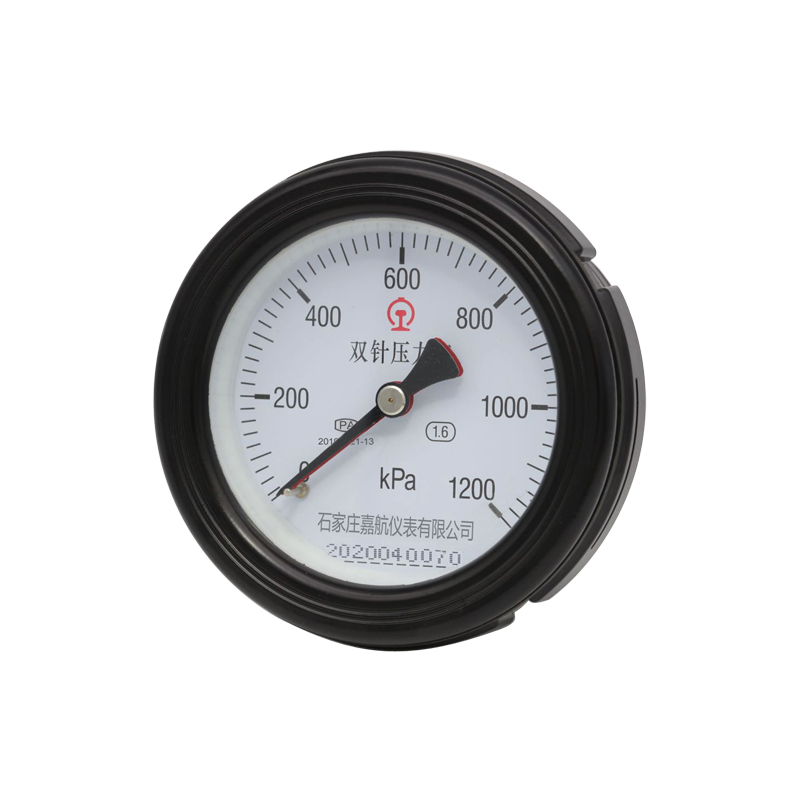
Kas . 21, 2024 17:30 Back to list
differential pressure gauge diaphragm type products
Understanding Differential Pressure Gauge Diaphragm Type Products
Differential pressure gauges are critical instruments in various industrial applications, providing vital measurements that are necessary for maintaining system efficiency and safety. One of the most prevalent types of differential pressure gauges is the diaphragm type, which utilizes a flexible diaphragm to measure the pressure difference between two points. This article explores the working principles, applications, advantages, and considerations associated with diaphragm-type differential pressure gauges.
How It Works
A diaphragm-type differential pressure gauge consists of a flexible membrane (the diaphragm) that separates two chambers. These chambers are connected to two different pressure points in a system. When a pressure difference exists between these two points, the diaphragm flexes in response to the pressure disparity. This movement is typically converted into a mechanical movement by a linkage system, which then translates into a readable pressure measurement on the gauge dial.
The diaphragm material can vary, often made from metals like stainless steel, or elastomers for specific applications. The choice of material is crucial, as it must withstand the media being measured while remaining responsive to pressure changes. The gauge’s design also ensures that it is capable of handling both static and dynamic pressure changes, making it versatile across various conditions.
Applications
Diaphragm-type differential pressure gauges are used in numerous applications, fulfilling a vital role across various industries. They are commonly found in
1. Process Industry Monitoring differential pressure across filters, pumps, and flow meters ensures that processes operate efficiently and that equipment maintains optimal performance.
2. HVAC Systems In heating, ventilation, and air conditioning systems, these gauges help in monitoring the pressure drop across air filters and ensuring proper airflow.
3. Pharmaceuticals Their use in clean room environments allows for monitoring air filtration systems, ensuring that contaminants are kept at bay.
4. Oil and Gas These gauges are crucial for measuring pressure drops in pipelines, helping to prevent failures and ensuring safe transportation of hydrocarbons.
5. Water Treatment Monitoring across various filters can help in maintaining water quality and operational efficiency in treatment plants.
Advantages
The diaphragm type differential pressure gauge boasts several advantages
differential pressure gauge diaphragm type products

2. Durability With proper material selection, diaphragm gauges provide excellent resistance to corrosive environments and can withstand high pressure, ensuring longevity.
3. Low Maintenance These gauges typically require little maintenance due to their simple mechanical design and sealed constructions that protect internal components from contamination.
4. Versatility They can be configured for various pressure ranges and applications, accommodating different industrial needs.
5. Safety With their ability to detect leaks or blockages in systems, diaphragm gauges enhance overall operational safety, preventing potential hazards.
Considerations
While diaphragm-type differential pressure gauges have many benefits, several considerations must be taken into account during selection
1. Pressure Range It's essential to choose a gauge that matches the specific range of pressures it will encounter in the application.
2. Media Compatibility The choice of diaphragm material should be compatible with the fluid or gas being measured to prevent degradation and ensure accurate readings.
3. Calibration Regular calibration is necessary to maintain accuracy over time. Understanding the calibration requirements will ensure the gauge performs optimally.
4. Installation Correct installation is vital for accurate measurements. Improper installation may lead to erroneous readings or damage to the gauge.
5. Environmental Conditions Factors such as temperature, humidity, and potential vibrations can influence the performance of differential pressure gauges. It's important to choose a product rated for the expected environmental conditions.
Conclusion
Differential pressure gauge diaphragm type products are indispensable tools in modern industrial applications. Their precision, durability, and versatility make them suitable for a wide range of environments, contributing to the efficiency and safety of various processes. By understanding their working principles, applications, and considerations, industries can effectively utilize these gauges to enhance their operational capabilities and ensure consistent performance. As technology advances, the future of differential pressure measurement will likely continue to evolve, opening doors to further innovations in this essential field.
-
Fluke Differential Pressure Gauges Precision Instruments for Industrial Use
NewsMay.25,2025
-
WIKA Differential Pressure Gauge 700.01 - High Accuracy & Durable Design
NewsMay.25,2025
-
Diaphragm Pressure Gauges High-Accuracy & Durable Solutions
NewsMay.25,2025
-
High-Accuracy Differential Pressure Gauge Diaphragms OEM Factories & Services
NewsMay.24,2025
-
Water Fire Extinguisher Pressure Gauge Durable Supplier Solutions
NewsMay.24,2025
-
Handheld Digital Differential Pressure Gauge Portable, High-Accuracy & Real-Time Data
NewsMay.24,2025
